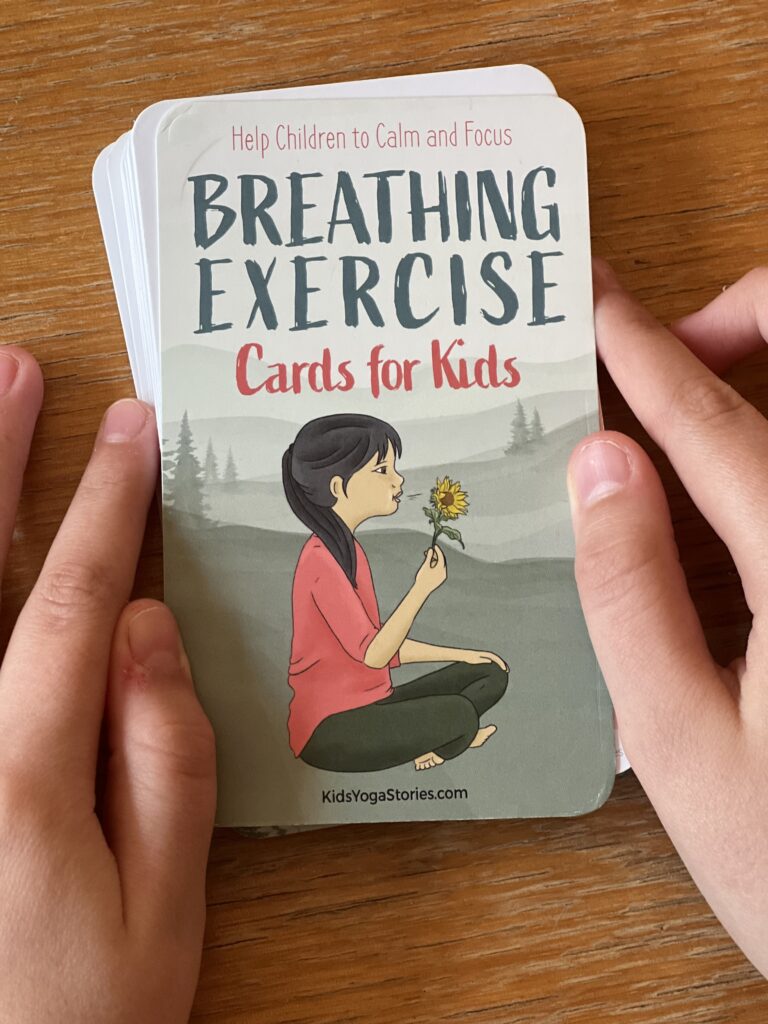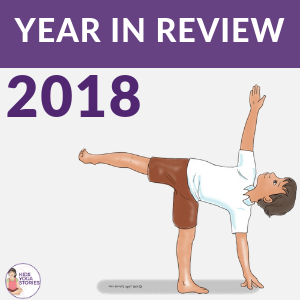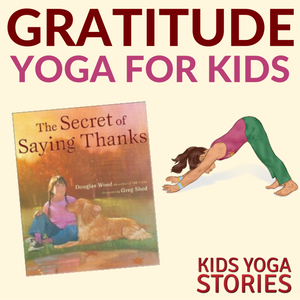3 Ways to Create Inclusive, Accessible, and Trauma-Informed Kids Yoga Classes (Interview)
Yoga is often seen as a practice that promotes physical flexibility and mental well-being. But on our journey to improve ourselves, we can’t overlook the diverse needs of those around us.
To learn more about inclusive, accessible, and trauma-informed yoga practices in kids yoga classes, I spoke to experienced kids yoga teacher Larissa Noto of The Lovely Little Lotus Yoga.
The goal of our kids yoga classes is to make every individual feel seen, heard, and valued. That goal goes beyond the yoga mat and can teach us all a valuable lesson in empathy and understanding.
1-The Language of Healing for Trauma-Informed Yoga: Choose Your Words Wisely
It all starts with language.
The words we choose to use can either create barriers or build bridges. Language sensitivity is the first step toward making yoga more inclusive.
This doesn’t just mean avoiding gendered terms like “hey, guys,” but also being mindful of how certain cues or instructions may resonate with individuals with different experiences of trauma.
Larissa emphasizes the importance of language that is permissive rather than prescriptive. Instead of commanding, “Close your eyes,” suggest, “You might close your eyes or soften your gaze.”
These subtle shifts in language can empower students to make choices that feel right for them, fostering an environment that respects their autonomy.
2-Flexibility and Choice for Trauma-Informed Yoga: A Personalized Approach
Larissa’s second tip is to ensure that flexibility and choice are integrated into the yoga practice.
This means recognizing that one size does not fit all. For some, the idea of using a mat or lying in Shavasana (Resting Pose) can be uncomfortable or even triggering. Larissa shares insights into how simple adjustments, such as allowing students to keep their shoes on, can make a significant difference.
Providing alternatives for each pose and being open to students finding their expression of a posture ensures that nobody feels left out.
The class becomes a safe space where individual preferences are honored, and everyone can explore the practice at their own pace and comfort level.
GET YOUR 3 POSTERS HERE

CLICK HERE to Get Your Free Poster Pack
3-Being Trauma-Informed: The Responsibility of the Kids Yoga Educator
Trauma-informed yoga is a compassionate approach that acknowledges everyone has a different path, some of which may be marked by trauma.
As we discuss in the interview below, understanding the subjective nature of trauma and its intergenerational impact—inspired by books like Grandmother’s Hands by Resmaa Menakem or The Body Keeps the Score by Bessel van der Kolk—is vital for creating a nurturing environment.
Yoga and mindfulness educators must be equipped with knowledge and sensitivity toward trauma. Being trauma-informed also implies being present and responsive to the unique narratives everyone brings to the class.
Yoga: A Practice for Everybody
Learning from Larissa’s journey, from her background in education and law, to her passion for yoga that provides safety and autonomy, we can all recognize the transformative power of an inclusive yoga practice. Our intentionality in meditation and creating spaces that welcome everybody is a continuous journey.
Embrace the learning process, just as Larissa recommends everyone to take trauma-informed training. Consider each yoga session not only a chance for personal growth but also an opportunity to contribute to a more considerate and kind-hearted world—one where every individual feels supported and included in the collective journey of well-being.
Books to Learn More about Trauma-Informed Practices
This article contains affiliate links.
My Grandmother’s Hands: Racialized Trauma and the Pathway to Mending Our Hearts and Bodies
by Resmaa Menakem

The Body Keeps the Score: Brain, Mind, and Body in the Healing of Trauma
by Bessel van der Kolk

What Happened to You?: Conversations on Trauma, Resilience, and Healing
by Oprah Winfrey and Bruce D. Perry

Watch “How to Create an Inclusive, Accessible, and Trauma-Informed Yoga Class” Interview here:
MAY WE SUGGEST



YOU MIGHT ALSO LIKE
SAVE FOR LATER








